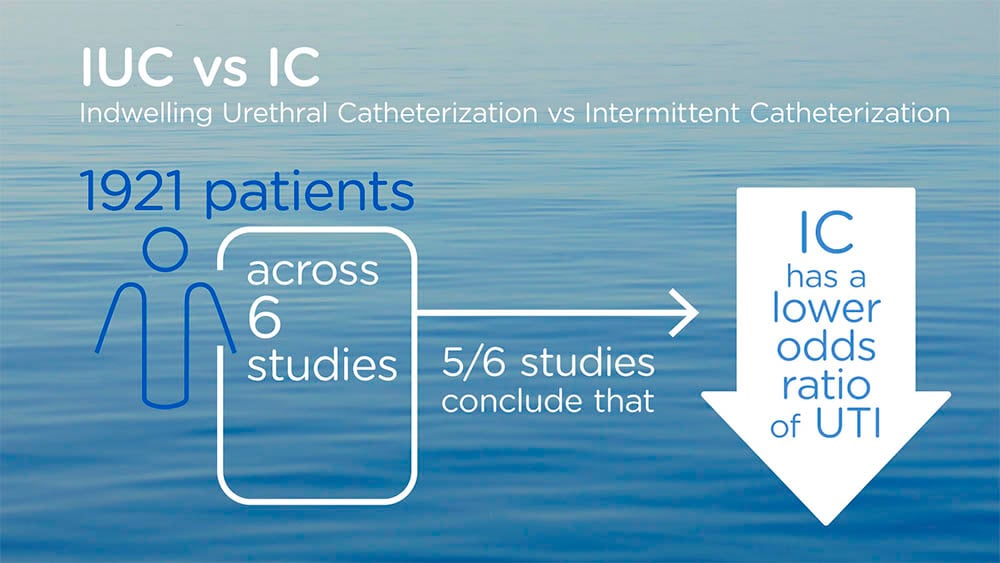In the current article the risk profiles are defined for frequent and/or severe febrile UTIs requiring hospital treatment. From the results obtained in this study a basic strategy for treatment of symptomatic infections is formulated.
Topics: Urinary Tract Infection (UTI), Catheter-associated UTI (CAUTI)
Given the great variability in the definitions used to diagnose Urinary Tract Infection (UTI), this review will aid in providing an overview of the joint clinical evidence between the different bladder management methods with regard to UTI risk.
Read MoreTopics: Urinary Tract Infection (UTI), Catheter-associated UTI (CAUTI), Bladder management, Intermittent Catheterization
The Cochrane review from 2013 by Jepson et al. 2013 was unable to recommend cranberry juice to prevent urinary tract infection (UTI). They furthermore identified a lack of evidence for the efficacy of other cranberry preparations (such as powders). New studies are, however, continuously added to the total weight of clinical evidence and the latest examples suggest that there may be benefits in this traditional remedy.
Read MoreTopics: Science Alert, Urinary Tract Infection (UTI)
Urinary tract anomalies are sometimes seen in children, and many of them require active treatment to achieve continence. Vesicoureteral reflux and/or a neurogenic bladder secondary to meningomyelocele (e.g. spina bifida) are two examples that require swift action.
Catheterization is sometimes a suitable solution and new research has studied the need for local anesthetic associated with catheterization. A meta-analysis combined many study results and concluded that the effect of local anesthetic was limited.
Sometimes, catheterization is not possible through the urethra and a continent catheterizable channel is surgically created. Different procedures (e.g. Mitrofanoff) can be used and two new studies look into the complications associated with this kind of surgery. Both studies conclude that surgical procedures should only be used in children who cannot perform urethral catheterization, because surgical revisions and long-term complications are common.
Another, maybe more far-fetched, solution to these children's problems is the use of stem cell therapy. A new review summarizes the available evidence for stem cell therapy and show that the use of bone marrow stem cells has potential in bladder tissue regeneration.
Read MoreTopics: Science Alert, Urinary Tract Infection (UTI), Neurogenic bladder, Catheter-associated UTI (CAUTI)
Urinary tract infections (UTIs) are a heavy burden on the healthcare system today. UTIs are also one of the most common complications among people living with a neurogenic bladder, causing significant complications and health hazards. New clinical research investigates the clinical problem and demonstrates that UTIs are still among the leading causes of death in people with a neurogenic bladder.
On average, people with a neurogenic bladder experience 2 UTI events every year, requiring repeated antibiotic treatments. Frequent use of antibiotics is one of the main contributors to the high prevalence of antibiotic-resistant bacteria today, and as a result, UTIs are getting more expensive and more difficult to treat. As a consequence, there is a major focus in clinical research on the search for non-antibiotic prophylactic treatment for UTIs.
Read MoreTopics: Science Alert, Urinary Tract Infection (UTI), Neurogenic bladder, Catheter-associated UTI (CAUTI)






